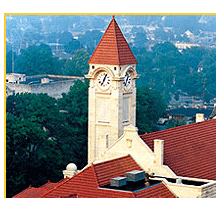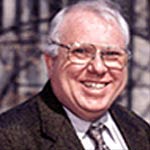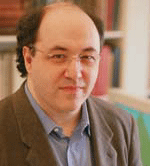
 |
 |
 |
 |
 |
 |
 |
 |
 |
 |
 |
 |
 |
|
|
|
|
|
Friday (Oct. 28, 2005) |
Saturday (Oct. 29, 2005) |
Sunday (Oct. 30, 2005) |
|
08:00-08:30 |
Continental Breakfast |
Coffee Service | |
08:30-09:00 |
|||
09:00-09:30 |
Veerman, Bustamante, Guerra | Dag Sørebø | |
09:30-10:00 |
Enrique Zeleny | Wendy Zhang | |
10:00-10:30 |
Kovas Boguta | Paul-Jean Letourneau | |
10:30-11:00 |
Break | Brunch. |
|
11:00-11:30 |
Ed Pegg Jr. (Demoscene) | ||
11:30-12:00 |
Michael Round | Closing Address: Distinguished Invited Talk |
|
12:00-12:30 |
Robert de Marrais | ||
12:30-13:00 |
Prof. Jonathan Mills (IMU Frangipani) |
||
13:00-13:30 |
|||
13:30-14:00 |
Conference Ends. | ||
14:00-14:30 |
14:00-18:00 |
Matthew Frank | |
14:30-15:00 |
Brenton Bostick | ||
15:00-15:30 |
Jason Cawley | ||
15:30-16:00 |
Break | ||
16:00-16:30 |
First Keynote Speaker: Colloquium in Lindley 102 |
Prof. Ray J. Solomonoff |
|
16:30-17:00 |
|||
17:00-17:30 |
|||
17:30-18:00 |
|||
18:00-18:30 |
Dinner (in Bloomington).
|
||
18:30-19:00 |
Welcome Address: Opening Reception |
||
19:00-19:30 |
|||
19:30-20:00 |
|||
20:00-20:30 |
Stephen Wolfram (IMU Frangipani link to Boston) |
||
20:30-21:00 |
|||
21:00-21:30 |
George E. Danner | ||
21:30-22:00 |
B. McGarry, D. Gage, E. Laub | ||
22:00-22:30
|
Eric Rowland | Round-table Discussion: | |
22:30-23:00 |
Late night pizza and refreshments. | Positional Number Systems with Negative Digits and NKS Late night pizza and refreshments. |
|
23:00-23:30 |
|||
23:30-23:59 |
|
||
|
|
|||
 |
Prof. J. Michael Dunn |
||
 |
Stephen Wolfram (Selected Talks and Presentations) This will be a fully interactive event (bidirectional video link). |
||
 |
Prof. Ray J. Solomonoff (Selected Talks and Publications)
|
||
 |
Matthew Szudzik
|
||
 |
Todd Rowland |
||
 |
Prof. Jonathan Mills |
||
|
Individual Presentations: |
|||
|
Applying NKS to Real World Problems: A Journey Without End (21:00, Friday)
|
|||
|
Cellular Automata: Is Rule 30 Random? (21:30, Friday) PDF version of this paper can be accessed here. Dr. Stephen Wolfram, developer of Mathematica, claims that Rule 30 can be used as an effective encryption scheme due to its random qualities. We investigate this claim using programs that produce different aspects of the Rule's output. From these programs, we were able to create a battery of statistical tests as well as identify properties that help characterize its security if used for encryption. The results provide adequate randomness for a high level of security with weaknesses isolated to even window sizes.
|
|||
The Right Side of Rule 30 (22:00, Friday)
|
|||
|
Two methods for finding cellular automata that perform simple computations. (9:00, Saturday) We have used two different methods to find cellular automata (CA) that perform some simple computations: by specifically constructing them to do a certain task and by doing searches in CA rule space. For the first case (specific construction), we start by building a CA that computes some arithmetical or logical function in a serial way, that is, a particle first moves to read one of the inputs and then applies it to the other one. Even though the rule you find ends up with a lot of states, depending on the type of operation you want it to perform, and it is not simple anymore, we find some types of behavior that are then used to construct CA rules that perform the same tasks but in a parallel way, therefore requiring a fewer number of states and steps. The results obtained in the first method are then used as restrictions or assumptions for the second method (searches in a rule space) in order to narrow down the rule space to perform a more directed search. We show some results for arithmetical functions, bitwise logical operations and other simple computations. Poster presentation (presenters won't be able to make it to Bloomington for the conference). |
|||
|
Generalizing Recursive Sequences (9:30, Saturday) I will show what happens with recursive sequences when initial values are changed or added, and whose behavior can be described with some simple program or formula and a systematic study of how often the RS gets undefined. Next, we can see how a RW can be emulated with subtitution system. Studying what happens in the process of evaluation, looking the number of intermediate steps and the values visited in each recursion is interesting too, and trying to find some connections with symbolic systems. I have some examples of RS defined for rational arguments. This presentation was canceled because Enrique forgot to bring his laptop, and none of the existing laptops matched what he needed. |
|||
| Nested Recursive Sequences (10:00, Saturday) The famous Hofstadter Q sequence is generated by the function f(n) = f(n - f(n - 1)) + f(n - f(n - 2))), with f(1) = f(2) = 1. We introduce and experimentally investigate the general class of such functions, called Nested Recursive Functions, whose simplest members take the form f(n) = a f(n - b f(n - c)). Despite their simple definition, they achieve a wide range of dynamics with different choices of the parameters a, b, and c. We classify typical behaviors, introduce methods of analysis, and establish theorems for computationally reducible cases.
|
|||
|
Demoscene: Making Movies from Simple Programs
(11:00, Saturday) What applications use simple programs? One area they are used effectively is the world of Demoscene competitions, where a spectacular movie of some sort must be made under incredible constraints. This talk will survey some of the more spectacular examples from this realm, and discuss some of the techniques. |
|||
|
Two-dimensional Cellular-Automata, Systems, and Inherent Simplicity (11:30, Saturday) Our fascination with snowflakes usually ends after a brief period of marvel upon unfolding a folded-and-cut paper revealing beauty and symmetry. This lost opportunity on math and science education is made worse in that the wrong idea of the generation of a snowflake is communicated with such a "pedagogic" process. The Thinking Processes of the Theory of Constraints for Education will be used to demonstrate a unique and powerful method of understanding NKS snowflake growth, snowflake variation, random and fixed initial conditions, and underlying assumptions giving rise to snowflake complexity under differing environmental conditions. Additionally, a model for exploring necessary and sufficient conditions of snowflake growth will be discussed. A rational construction of models, experimentation, logic, simulation, the verbalization of assumptions, and a structured approach to independent research will be demonstrated in this presentation. |
|||
|
Presto! Digitization: From NKS Number Theory to "XORbitant" Semantics, The objects of the great Nonlinear Revolutions – Catastrophes and Chaos in the 1960s-70s (henceforth, CT); and, “small-world” and “scale-free” Network Theory (NT), emerging from studies of synchronization since the Millennium – will be spliced together by a New Kind of Number Theory, focused on digitizations (i.e., binary strings). NT nodes then become "feature-rich" representations (nodules in a “rhizosphere”) of CT contents. The "Box-Kite" formalism of zero divisors (ZD's) – first showing in the 16-D Sedenions, then in all higher 2N-ions derived from Imaginaries by Cayley-Dickson Process (CDP) – can model such “enriched” nodules. Its (bit-string XOR-ing vs. matrix-multiplication-based) operations unfold into "representations" of the objects traditionally linked with “partitions of Nullity”: Singularities. The route from this “local” level of CT to fractals and Chaos, via CDP extensions to 2N-ions for growing N, will involve us in graphics of higher-dimensional “carry-bit overflow,” as manifest in the mandala-like patterns showing up in “emanation tables” (the rough equivalent, for ZD's, of group theorists' Cayley Tables). More concretely, this route will model semantic propagation – “meaning” itself. I'll lead into this with a quote about "Hjelmslev's Net" (which I'll claim is the CDP manqué) from a famous postmodern text deeply engaged with the philosophy of future mathematics, Deleuze and Guattari's A Thousand Plateaus (where “rhizosphere” imagery arose). From here, with strong assists from the CT-based structuralism of Jean Petitot, Algirdas Greimas's “Semiotic Square” will show us how to explicitly link CT thinking to the foundations of semantics via ZD “representations,” while the infinite-dimensional ZD meta-fractal or “Sky” which Box-Kites fly “beneath” or “in” – first appearing in the 32-D Pathions and incorporating the higher 2N-ions – will provide sufficient lebensraum for Lévi-Strauss's “Canonical Formula” of mythwork to unfurl in, thereby doing for semiotics what S-matrix methods promised for particle physics. (These results serve to extend my NKS 2004 paper.) |
|||
|
An NKS Approach to the Black-Scholes Equation.
(14:00, Saturday) Discretization is a hallmark of the approach in A New Kind Of Science. I explore some implications of this in financial mathematics, starting with the Black-Scholes equation and formulas. Specifically, I report on some numerical experiments following the work of Leland (1985) on 'Option Pricing and Replication with Transaction Costs'. |
|||
|
The 3n+1 Problem: Variations on a Theme
(14:30, Saturday) The 3n+1 Problem is a famous problem in mathematics that demonstrates the idea of simple inputs into a system causing very complex output. An efficient cellular automaton that emulates the 3n+1 function is demonstrated. Structures that appear in the cellular automaton are discussed. Variations of the cellular automaton are then introduced, where they are compared with various mathematical functions. |
|||
|
Markov Machines |
|||
|
Thinking security with NKS-awareness
|
|||
|
Multiscale Simulation of Avian Limb Development
|
|||
|
Cellular Automata with Memory: Phenomena and Emulations |
|||
|
Round table organizers: |
|||
|
A. German, T. Sato, J. Bonner, K. Nagao, A. M. Martin and Y. Yamamoto (22:00, Saturday) This presentation was canceled. There was no time for it on Saturday night. |
|||